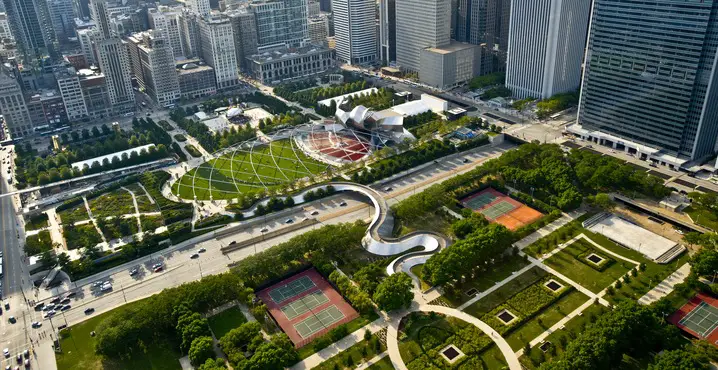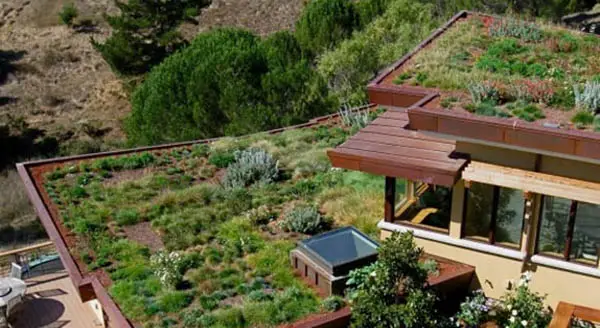Given the growing global concern about issues like global warming and environmental degradation, terms like green roofs are becoming more commonplace.
However, if you are unaware of what a green roof is, it is a roof of a building which is either partially or completely covered with vegetation, a growing medium and a waterproof membrane. A green roof is also known as a living roof.
Green roof systems have numerous social, environmental and economic benefits. Green roofs help in countering the negative impact of floods, biodiversity and the reduction of green spaces, especially in urban locations.
BENEFITS OF GREEN ROOFS
The benefits of green roofs are numerous, as such rooftops not only help improve the quality of the air we breathe but also help in saving our ecosystem and making buildings look beautiful.
They help insulate our homes and cut down on the cost of energy consumption for heating or cooling our houses. These roofs are beneficial in two ways: firstly they reduce Co2 emissions, and secondly they help conserve resources.
Green roofs are both easy and economical to install. They also provide space for outdoor entertainment if you do not own a sizeable garden at your house.
You can arrange events on green roofs and enjoy the space with your friends, and owning a green roof can be a great hobby for people who love gardening.
Thus, green roofs are a great investment for your home. The following are some of the benefits of green roofs that will convince you that they are designed for your convenience.

- Increase Roof’s Lifespan
Roofs are constantly exposed to extreme heat, heavy rainfall and ultraviolent rays. All these factors cause deterioration and traditional roofs wear out over time, but having a green rooftop will give your roof a longer lifespan.
- Reduced Energy Consumption
If you install a green roof, your house will require less heating or air conditioning which will in turn reduce energy consumption. This positive impact not only ensures reduced energy consumption, but installing a green roof also means greater savings.
- Lower Co2 Emissions
It has been noted that a large percentage of Co2 emissions which are responsible for global warming are emitted by buildings, both residential as well as commercial.
Most of the emissions are the result of internal heating or cooling systems, and buildings with green roofs will consume less energy for cooling or heating which will lead to lower Co2 emissions.
This means that with green roofs, there will be greater chances of preventing climate change that is already affecting our planet.
- Adaptation to Climate Change
Green roofs are the best way to adapt to the possible climate change, as due to the existing gases in the environment we are likely to face hotter climates in the coming years. Green roofs will definitely help in adapting to this predicted heat.

- Aesthetic Improvement
Green roofs are the best way to make your building look beautiful. Green roofs will also increase the value of a building by providing improved views. Green roof systems will also allow people to relax or attend events and participate in green activities that help bring a change.
- Reduced Sound Transfer
Green roofs not only act as a barrier to heat but also to sound. This is evident from the fact that buildings that do not have such systems have to bear the sound of raindrops falling on the roof which might cause disturbances in buildings such as schools.
Similarly the sound escaping industrial areas causes sound pollution that has a negative impact on surrounding areas. Having a green roof can act as a barrier which reduces sound transfer.
- Reduced Urban Heat Island Effect
The urban heat island effect is the climate disparity between urban and surrounding rural areas.
This climate disparity is due to the greater greenery in the countryside which reflects back the warm rays, while urban areas absorb these rays which warm them at night.
By installing green roofs the warmer rays will be reflected back and this climate disparity will be reduced, resulting in a lower urban island effect.
- Forming a Sustainable Drainage System
Heavy rainfall leads to excess water being accumulated on rooftops. This water needs to be drained off as it can cause harm to the exterior of the building and carry harmful materials like metal chips, hydrocarbons and other chemicals that can pollute the water supply.
Usually this water is drained from roofs through a series of underground pipes, but due to increased urbanization such systems can be blocked.
Nowadays, the best way to drain this excess water is through green roofs, as the plants store excess water and return some of to in the environment through evaporation.

Final Verdict
The advantages of green roofs are numerous and cannot all be mentioned here. Such green roof systems have not shown any disadvantages as of yet, and until these disadvantages are discovered we can enjoy the benefits to the fullest.
Green roofs also help increase biodiversity and wildlife, boosting the ecosystem. The cost of these roofs greatly outweighs its benefits, so it is a very viable project and should be promoted.
People need to be encouraged to shift towards green roofs as they will not only help in making their lives or their cities better, but such roofs also help make our planet a better place to live for the present as well as future generations.
These green roofs are indeed the best way to combat the negative impact of global warming and other such hazards; thus the installation of green roofs should be the top priority of urbanized areas.
Hi, I’m Jim. I was a roofing constructor for 20 years, before deciding to start myrooff.com and gather the best content about roofing. I love woodworking and construction and it was only natural for me to start this passion project of mine. Thank you for visitng.

